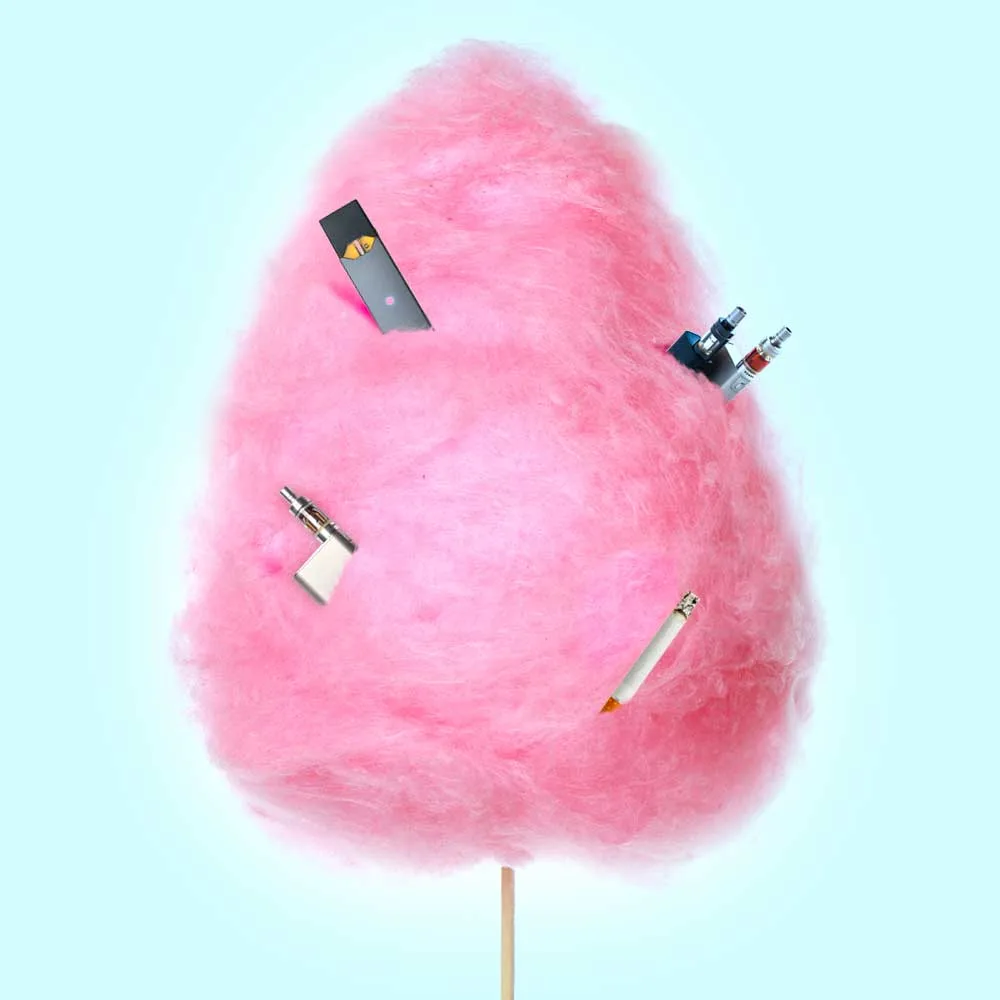- Resources
- News
-
-
Get Email Updates
Sign up for STOP's newsletter and never miss an update on our latest work and the tobacco industry's activity.
-
Get Funding
Ready to tackle industry interference? You could be eligible for a grant.
-
Share a Tip
Do you have information on tobacco industry misconduct in your country? Let us know.
-
Get Email Updates

The dangers of flavored tobacco are clear: It’s appealing to young people, makes it easier to start using tobacco and harder to quit. In other words, tobacco flavors are one of the most effective tools the tobacco industry has to hook the next generation.
That’s why the industry fights flavor bans or finds ways to work around them. If flavors aren’t there to cover up the unpleasant taste, smell and sensation of tobacco for young or new smokers, fewer people will become lifelong tobacco users. That means less strain on health systems and economies. Less loss and grief for families and communities. But to tobacco companies, it means only one thing: less profits.
Why the industry loves tobacco flavors
Getting young people hooked on its products is integral to the survival of the tobacco industry. If there were no new tobacco users, tobacco companies would go out of business when current users either quit or die from using their products. So the industry targets young people as “replacement smokers”—a term actually used by an R.J. Reynolds employee in 1984. While that phrase was uttered almost 40 years ago, the tactic of targeting children and young people is still very much in use today.
Many current tobacco users report that the first tobacco product they ever tried was flavored. And data suggests that those who experiment with flavored tobacco are more likely to become lifelong tobacco users. In short, flavors are often a path from experimentation to regular use—one which the industry won’t give up without a fight.
How the industry fights bans or finds ways to work around them
As of 2021, about 40 countries have implemented or plan to implement policies around flavors to protect young people, in line with recommendations in the global health treaty, the WHO Framework Convention on Tobacco Control. In response, the industry takes action to protect its profits.
Knowing that the lack of flavors could reduce the number of young people who start using tobacco, tobacco companies lobby against bans before they go into effect. In 2013, Chile’s Ministry of Health tried to introduce a ban on menthol cigarettes, but the ban was rejected after tobacco industry lobbying. When a new bill to ban menthol was introduced in 2015, British American Tobacco threatened to withdraw its operations in the country.
Tobacco companies also fight bans after they’ve been approved. Just two days after voters in the state of California in the United States voted to ban flavored tobacco, R.J. Reynolds filed a federal lawsuit to block the ban from going into effect. (The Supreme Court denied the company’s request.)
Flavor bans often follow one of two approaches: Governments can ban all flavor additives, or they can ban “characterizing flavors.” With a ban on “characterizing flavors,” tobacco companies can still include flavoring additives as long as the user cannot perceive them—though evidence suggests these additives can still make tobacco more palatable.

Flavors are often a path from experimentation to regular use—one which the industry won’t give up without a fight.
When policymakers are considering a flavor ban, the industry often lobbies for the more ambiguous ban on “characterizing flavors.” This was the case with the 2014 revision of the EU Tobacco Products Directive, which ultimately included only a “characterizing flavors” ban. This characterizing flavors ban included a ban on menthol, which was set to go into effect in 2020.
In the months immediately preceding and following the menthol ban, Japan Tobacco International released 66 new products that weren’t labeled as menthol, but implied the products were flavored via green and blue packaging. Some of these varieties were lab-tested and were determined to contain menthol. In California, R.J. Reynolds launched a new line of cigarettes whose colorful packaging mimicked that of flavored tobacco, and advertised them with terms such as “crisp” and “tropical oasis.” In May 2023, the Attorney General ordered the company to stop selling the new cigarettes, as they were not compliant with the state’s flavored tobacco ban. R.J. Reynolds responded with a typical tactic, launching a lawsuit against the state of California.
When tobacco companies are unsuccessful in their attempts to thwart regulation, they alter their products or introduce new flavor accessories that are not covered by the regulations in order to continue reaching young people. Companies have introduced flavored filters and papers for roll-your-own tobacco, filter tips that can be inserted into specially designed filters and flavored cards that can be inserted into cigarette packs—such as Imperial Brands’ “flavour infusion cards” that come in “menthol chill” and “fresh mint” flavors, which launched in early 2020.
Where the industry is pushing tobacco flavors
New research highlights a concerning uptick in flavored tobacco market share in low- and middle-income countries (LMICs), where 80% of the world’s tobacco users live, and where regulations on flavors are less common.
Researchers noted high use of flavored products in some LMICs, and growing market share in others. Those with high market share (a market share of 20% or more in 2019) included Cameroon, Nigeria and the Philippines, and those whose market share doubled between 2005 and 2019 included Uzbekistan, Bolivia, Egypt, Nigeria, India, Pakistan, Vietnam and Ukraine. Notably, the researchers found links between high market share and industry activities, including marketing and interfering in policymaking.
Look past the rhetoric to see the tobacco industry’s true priorities
Tobacco companies’ actions to protect flavors may seem perplexing, especially if you believe their public-facing rhetoric about not wanting anyone—especially youth—to start using tobacco. But history has proven that the industry’s actions show its motivations better than its words.
Despite the industry’s efforts, cities and countries around the world have successfully implemented flavor bans and are seeing the positive effects. As more governments act to fully ban flavors, future generations will be protected from potential lifelong addiction and the many harms that come with tobacco use.




